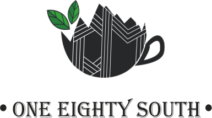A Tale as Old as Tea

It’s common knowledge that tea is one of the most highly consumed beverages in the world (second only to water) and for many, this humble beverage holds a unique place not only in a person’s daily life, but in their very cultural identity. For countries like Aotearoa/New Zealand, much of our relationship with tea has been shaped by that of British culture and colonialism. Following this perspective, the history of tea in the west generally starts from the 1600s and it continues for a centuries long saga of rising and falling empires; expansion and exploitation; espionage, theft, tax-evasion, and drug addiction (and you thought it was just some leaves in hot water huh?).
While this makes for a harrowing story on its own (and hence, deserving of its own post…) the history, development and myth of tea actually goes back much further.
The earliest reference to tea in historical literature dates back to the Zhou Dynasty more than 3,000 years ago, in which tea was noted for its medicinal benefits.[i] History of course, exists long before the written record and it is generally accepted that tea has been consumed in China for at least 4,000 years. According to Joseph Wesley Uhl in his book, The Art and Craft of Tea, the origins of tea can be traced to the northern foothills of the Himalayan mountains. Here, the local people chewed on the leaves of the Camellia sinensis plant (from which all true teas are made) as medicine.[ii] Over the following millennia, revolutionary techniques and technologies developed and allowed for these prized leaves to be better preserved and stored. This expanded not only the lifespan of tea, but also its ability to be transported across great distances. Villages throughout China have since developed a rich history of unique tea cultivation that has led to the hundreds of tea variations we can find today. For much of its history, China held a monopoly on tea. Gradually, trade developed and spread further abroad with the likes of the Silk Road and Tea Horse Road (named for the main goods sold along these routes).[iii]
The history of tea however is more than just historical dates and records. It is the mythology and storytelling of tea that provides insight to its embedded cultural reverence. One of the most popular myths regarding the origins of tea describes the event as an accidental (and yet world-changing) occurrence. While slight variations exist, the story goes that one day a man took rest under the shade of a Camellia sinensis tree with a cup of boiled water. While sitting, a leaf is said to have fallen from above and directly into his cup. As the man watched it steep, he noticed how this leaf was able to turn his water into a beautiful shade of green and produce an alluring, earthy fragrance. Full of curiosity at this strange occurrence, the man dared to take a taste from his cup and he continued until his vessel was empty. To the man’s delight, he soon found himself feeling refreshed, inspired, and full of vitality. This man was known as 神農 or Shennong, the Chinese inventor of farming and medicine and it is said that with him, the first cup of tea was brewed.
[i] Wu Juenong translated by Tony Blishen, An Illustrated Modern Reader of ‘The Classic of Tea’ (USA: Shanghai Book Traders, 2017).
[ii] Joseph Wesley Uhl, The Art and Craft of Tea (Massachusetts: Quarto Publishing Group USA, 2016), 12.
[iii] Linda Gaylard, The Tea Book (London: Penguin Random House, 2015), 76.
